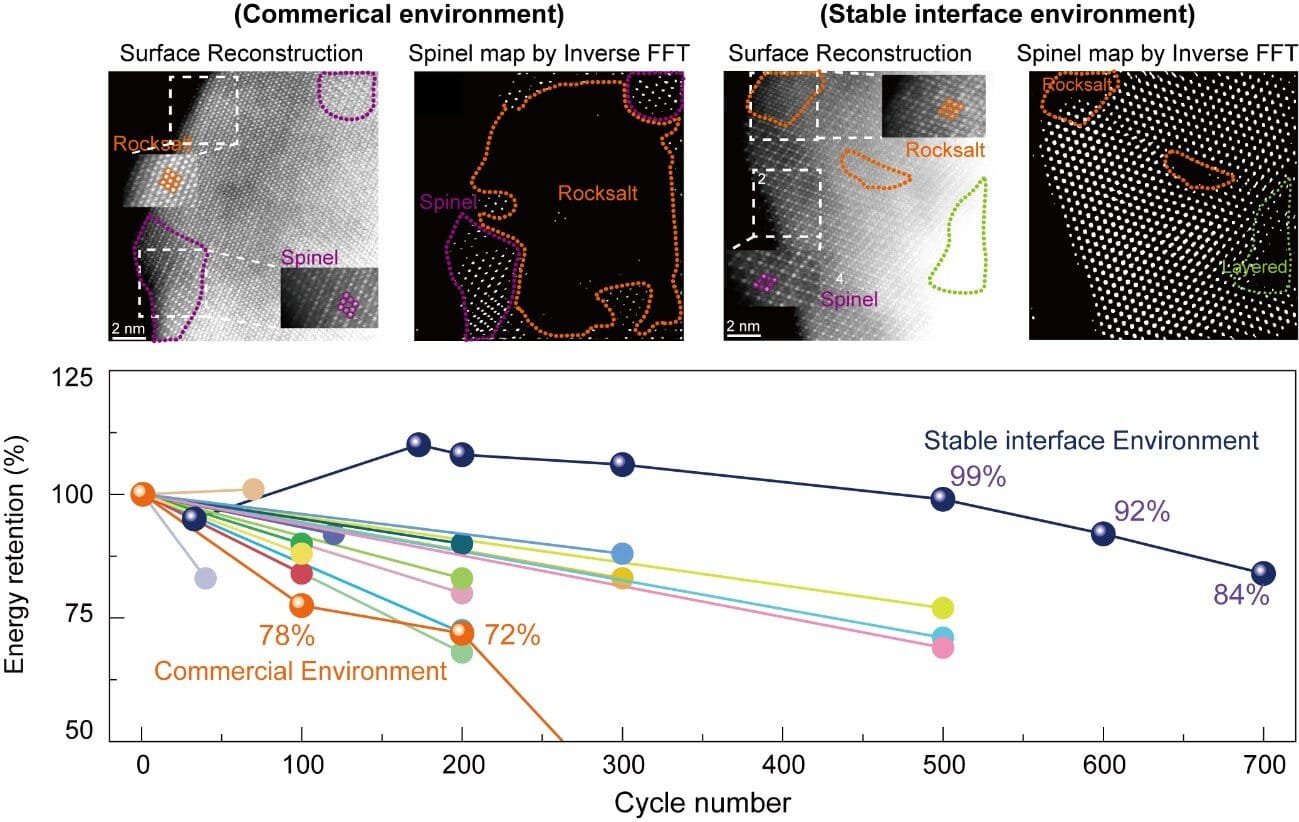A team of researchers has developed an innovative strategy to significantly enhance the durability of lithium-rich layered oxide (LLO) material, a promising next-generation cathode for lithium-ion batteries (LIBs). This breakthrough, published in the prestigious journal Energy & Environmental Science, could pave the way for longer-lasting batteries, advancing their role in powering electric vehicles (EVs) and energy storage systems (ESS).
Lithium-ion batteries are critical to modern technology, underpinning the shift toward renewable energy and sustainable transportation. Among the various cathode materials, LLO has emerged as a game-changer due to its ability to deliver up to 20% higher energy density compared to traditional nickel-based cathodes. This is achieved by reducing nickel and cobalt—elements that are costly and environmentally problematic—while increasing the proportions of lithium and manganese. This composition not only enhances energy capacity but also aligns with growing calls for sustainable and economical battery solutions.
Despite its promise, the commercialization of LLO has been stalled by critical challenges. The material suffers from capacity fading and voltage decay over repeated charge-discharge cycles. These issues arise primarily from structural instabilities within the cathode, leading to diminished performance and reliability. Previous research has identified some of the mechanisms behind these failures, particularly changes in the cathode structure during cycling. However, the precise causes of these instabilities have remained elusive, and existing stabilization strategies have struggled to address the root problems.
The research team from POSTECH (Pohang University of Science and Technology) took a groundbreaking approach by targeting the role of oxygen release—a key factor destabilizing LLO during charge-discharge cycles. They hypothesized that oxygen release from the cathode weakens the material’s structure, contributing to its degradation over time. To counter this, the team aimed to reinforce the chemical stability of the interface between the cathode and the electrolyte, a critical zone where these destabilizing reactions occur.
By refining the composition of the electrolyte, the researchers developed a formula that significantly reduced oxygen emissions. This innovation effectively minimized structural changes within the LLO material, preserving its integrity over extended use. Testing confirmed the efficacy of this approach: batteries using the enhanced electrolyte retained an impressive 84.3% of their energy capacity even after 700 cycles. This represents a dramatic improvement compared to conventional electrolytes, which typically retain only 37.1% of energy capacity after 300 cycles.
A key insight from the study was the role of surface structural changes in the stability of the LLO material. The researchers found that disruptions to the surface of cathode particles had a cascading effect on the material’s overall performance. By addressing these surface-level instabilities, they not only improved the longevity of the cathode but also mitigated undesirable side reactions, such as the decomposition of the electrolyte, which often plagues battery efficiency.
Professor Jihyun Hong, a leading figure in the research, highlighted the importance of advanced analytical tools in achieving these results. “Using synchrotron radiation, we were able to analyze the chemical and structural differences between the surface and interior of the cathode particles,” he explained. “This revealed that the stability of the cathode surface is crucial for maintaining the structural integrity and performance of the entire material. Our findings open new avenues for the development of next-generation cathode materials that are both durable and high-performing.”
This study represents a major step forward in the quest for sustainable and efficient lithium-ion batteries. By addressing the fundamental challenges of LLO stability, the researchers have not only extended battery lifespan but also brought the material closer to commercial viability. The implications of this breakthrough are far-reaching, as more durable and energy-dense batteries are essential for advancing EV technology and supporting the integration of renewable energy into the grid.
In practical terms, the enhanced durability of LLO cathodes could translate into longer-lasting electric vehicles with fewer battery replacements over their lifetime. Similarly, energy storage systems relying on these batteries would experience lower maintenance costs and greater efficiency, making them more attractive for large-scale renewable energy projects.
This innovation also aligns with global efforts to reduce reliance on scarce and environmentally damaging resources like cobalt. By increasing the manganese and lithium content in cathodes, the POSTECH team’s work supports the transition toward more sustainable material sourcing, a critical consideration as the demand for LIBs continues to surge.
Looking ahead, the research offers a blueprint for further advancements in cathode materials. The insights gained from this study can be applied to other emerging battery technologies, potentially accelerating the development of even more advanced energy storage solutions. As industries and governments worldwide strive to achieve net-zero emissions and combat climate change, breakthroughs like this one are indispensable.
Reference: Gukhyun Lim et al, Decoupling capacity fade and voltage decay of Li-rich Mn-rich cathodes by tailoring surface reconstruction pathways, Energy & Environmental Science (2024). DOI: 10.1039/D4EE02329C






